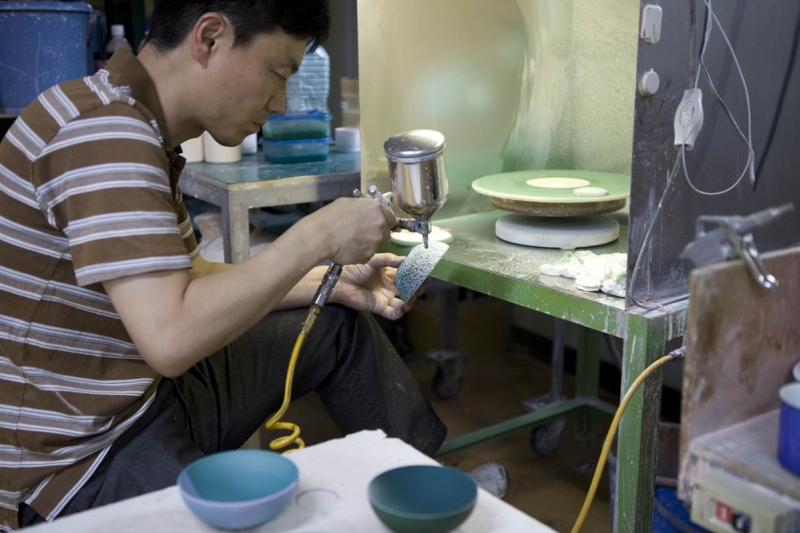Interview: Christien Meindertsma
Dutch designer Christien Meindertsma dedicates large amounts of time to the study and research of materials. Her much celebrated and award winning project ‘Pig 05049’ saw Miendertsma investigate each different product that was made from a single pig and chronicle the results in a book. Here she tells us about her experiences of working in Arita and the things that inspired her unique porcelain collection.
- The starting point for your 2016/ designs was quite unusual, can you tell us about it?
I had read that at the same time that the Dutch East India Company was importing Japanese porcelain to Europe, linen from The Netherlands was being brought to the Shogun. I thought this was interesting as linen is normally shown beneath Japanese porcelain in paintings from the period and so these two materials have a strong relationship. Initially, I wanted to use real linen directly in the making of my porcelain objects, in the end it was too difficult for the production process so I developed a design that uses linen shapes as inspiration.
- Was the pottery you worked with in Arita accommodating to your design process?
Yes, I really enjoyed working with Fujimaki. He was already familiar with my work, which was a real surprise but very nice. And Fujimaki is young; he is really looking to the future. He wants his company to progress and so he was not afraid of trying something new. We visited lots of factories on our first visit to Arita and I remembered Fujimaki’s factory in particular as being charming and having a great atmosphere.
- In projects like ‘Pig 05049' and ‘The Bottom Ash Observatory' you would spend a lot of time on research, did that technique apply here?
For this project the time frame was short, I normally spend a lot of time communicating with craftsmen or factories and spend a lot of physical time there with the makers but this time I couldn't do that so that made it very different – I had to communicate through other people.
- The design process had to lead to something that was mass producible, that was an important part of this project, how did you tackle that?
My experience is that if you want something to be producible you always have to find solutions, make compromises, and those might not have been part of your first draft of a design. We could easily have made something beautiful but that was unusable or unproducible but that was not the aim.
- With many of your projects you return to a material again and again. Do you think Porcelain might be a material you come back to?
Definitely. I would really like to do more in porcelain and also there is a lot to learn! I am not experienced in this material, which can be difficult but also an advantage. As a designer, you always look for where the edge of the possibilities for a material is and where solutions might lie. But, equally, sometimes it can be good it to not to know everything.









